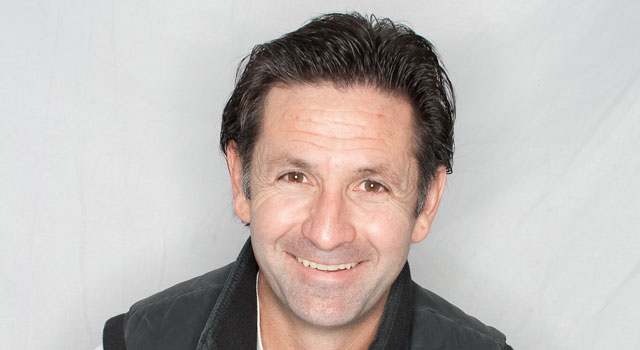
Takealot made headlines last month when it secured about R1bn in funding from shareholder Tiger Global Management, an international investment firm. CEO Kim Reid told TechCentral when the deal was announced that Takealot is on an aggressive growth path in an effort to tap into what he called a R550bn e-commerce opportunity in South Africa.
Does Takealot’s mega deal mean e-commerce in South Africa is on the cusp of a boom? In short, the experts say the answer is a qualified “yes”. Although there have been several notable e-retail failures in recent years, demand is growing strongly — and this is leading not only to big investments by established players but also the emergence of many start-ups hoping to cash in.
One such start-up is ClickBooze, which hopes to take on traditional liquor merchants.
“It’s taken a long time for South Africa to catch up, but it’s amazing to see how quickly consumers are adopting online as a reliable, consistent form of purchasing,” says ClickBooze co-founder Reon de Reuck.

De Reuck says there are many factors keeping South African e-commerce sites behind the international curve, and the lack of decent Internet infrastructure is one of them. “But you just need to look at the shift in above-the-line corporate advertising campaigns to notice the ever-increasing focus on online shopping,” says De Reuck.
“With a growing number of smart devices, the reduction in bandwidth costs and the ever-growing number of trustworthy, quality sites in South Africa, we’re on the brink of a breakthrough for e-commerce.”
But it’s not all a bed of roses. Naspers, a big player in the industry — it owns Kalahari.com — closed some of its online stores earlier this year. Style36, 5Rooms, Kinderelo, SA Camera and 5Ounces were all shuttered. Naspers investor relations head Meloy Horn said at the time that it had decided to restructure operations to focus specifically on general e-retail businesses such as Kalahari, which it plans to grow aggressively in the next 12 months.
According to Naspers, the closures were not related to performance but formed part of the company’s shift in strategy.
E-commerce in South Africa remains a healthy and growing market in South Africa, with annual growth of between 30% and 40%, according to World Wide Worx MD Arthur Goldstuck. This growth is fuelled partly by the digital participation curve, which explains that the average person needs about five years online before they are ready to shop online. (Read more on the digital participation curve.)
“What we are seeing at the moment is a rapid acceleration in the number of experienced people on the Internet in South Africa,” says Goldstuck. “This, in turn, ensures that e-commerce grows healthily. The more experience a user has, the more likely they are to spend money online and do so more regularly.”
However, he says there are still challenges holding back e-commerce, not the least among them fulfilment and logistics.
Smartphones could propel online sales, Goldstuck believes. Because South Africa is a mobile-first country, smartphone applications should help unlock future sales growth.
“E-commerce on mobile devices today is very clunky and clumsy,” he says. But using a dedicated app yields a much better experience than a mobile Web browser. “This means retailers will have to convince people to download their apps before mobile commerce takes off. I see this happening in the next five years.”

Absa Investments analyst Chris Gilmour says fewer than 1% of retail sales in South Africa take place online. “Broadband is still a major issue,” he says, but the biggest inhibitor to growth is in logistics, which isn’t nearly as well developed as it is in mature e-commerce markets.
“What Mr Price has done recently is enable click-and-collect purchases, which allows consumers to shop online and collect in-store,” says Gilmour. “And this might just work. It gets around the logistical side, but does not have the immediacy you want.”
Mr Price’s online shopping portal ships goods to 130 countries around the world. “They have been remarkably successful,” says Gilmour. The Durban-based retailer has a keen understanding of the value of technology, he adds. It has used this to stay ahead of its competitors.
One challenge with e-commerce deliveries in South Africa is that the cost of delivery can outweigh the cost of the product, especially when it comes to groceries. “We have seen the likes of Pick n Pay deliver food via Tuk Tuks, but the reason why grocery shopping has not really taken off is because there are too many costs throughout the chain of delivery and costs are getting more prohibitive,” he says.
Gilmour says that the need for e-commerce in South Africa is not as obvious as it is in other places around the world. Countries such as the US and the UK, where weather conditions such as snow can have an impact on consumer mobility, will enjoy greater demand for e-commerce.
“I do see a bright future for e-commerce in South Africa, but people will have to understand that it will just take a lot longer than they expect.”
Three elements to success
ClickBooze’s De Reuck says start-ups hoping to take on South Africa’s traditional retailers online face a number of challenges — apart, of course, from finding a space that has a large enough target market.
There are three elements start-ups have to get right to ensure success: platform, logistics and shipping, and marketing. Companies need to do all three of these well to be successful.

A scalable platform is not easy to get right, but it’s actually the easiest part of the process, says De Reuck. “If you can’t deliver your product to the end user on time, you won’t have repeat business. And if you don’t stay top of mind in an easy-to-enter environment, your site can very quickly disappear into the ether.”
The newly launched ClickBooze website’s biggest challenge so far has been figuring out a viable shipping strategy. De Reuck says shipping costs associated with bottles of alcohol does not decrease with volume — they increase at a consistent rate. Online shoppers have generally been conditioned to expect either a flat shipping rate or to a rate that decreases as the basket size increases. “The breakage associated with the flat rate means that end users are, in essence, penalised for smaller basket sizes in South Africa,” says De Reuck. “One of our challenges has been to define a shipping strategy where our customers don’t feel put off by high shipping costs and our margins stay intact.” — © 2014 NewsCentral Media




